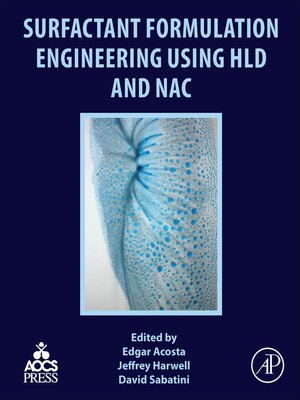
Sign up to save your library
With an OverDrive account, you can save your favorite libraries for at-a-glance information about availability. Find out more about OverDrive accounts.
Find this title in Libby, the library reading app by OverDrive.



Search for a digital library with this title
Title found at these libraries:
| Library Name | Distance |
|---|---|
| Loading... |
Surfactants are molecules that contain groups that are water-loving (hydrophilic) and oil-loving (lipophilic). The central question in formulations is often which of the two portions dominate the behavior of the surfactant. For many years that question was answered in terms of the surfactant structure only. However, the modern view is that the hydrophilic-lipophilic nature of the surfactant is the result of surfactant structure and formulation conditions (nature of the oil, temperature, aqueous phase composition) as captured by a semi-empirical equation called the hydrophilic-lipophilic difference (HLD). The HLD is a dimensionless number that indicate the approach to the point where the surfactant inverts its solubility from being water-soluble (negative HLD) to oil-soluble (positive HLD). The HLD alone is a good indicator of how the formulation could behave but it does not produce any formulation property that can be used to predict product performance. The net-average curvature (NAC) are a set of equations that take the value of HLD to predict the properties of the formulation, such as oil (and/or water) solubilization capacity, interfacial tension, phase diagrams, contact angle and others.Surfactant Formulation Engineering using HLD and NAC will not only introduce the reader to HLD-NAC but also to the practical use of these concepts in numerous applications ranging from application in the petroleum industry, to environmental remediation, to food, cosmetic and pharmaceutical applications, and even nanotechnology. The last part of the book will look at the molecular origins of the empirical terms in HLD via the Integrated Free Energy Model (IFEM).
- Concentrates on the HLD and NAC, providing industrially-relevant examples
- Provides the only single depository for HLD parameters
- Balances theory and application, with insights from both academic and industrial authors
- Includes examples relevant to a wide range of fields, with practical guides on how to go from the formulation objective(s) to an actual formulation design







